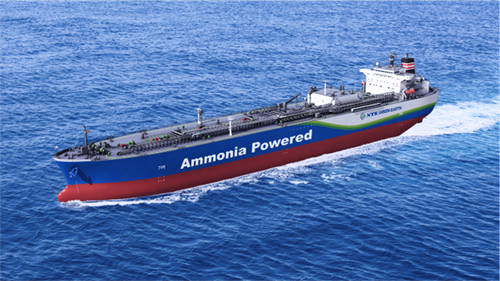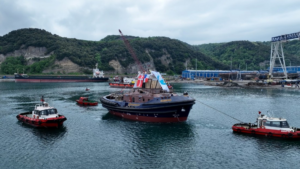
Nippon Yusen Kabushiki Kaisha (NYK), Japan Engine Corporation, IHI Power Systems, and Nihon Shipyard have signed in December a series of contracts to build the world’s first ammonia-fueled medium gas carrier (AFMGC), equipped with Japan-made engines.
In a statement issued yesterday, the companies said that Japan Engine will supply the dual-fuel two-stroke main engine, while IHI Power Systems will provide the dual-fuel four-stroke auxiliary engine.
The 40,000 m³ type ammonia fuel ammonia carrier is planned for delivery in November 2026 by Japan Marine United Corporation, Ariake Shipyard.
Ammonia fuel dual-fuel engines must co-fire ammonia with fuel oil as pilot fuel. On the other hand, a high ammonia co-firing ratio is required to achieve a high GHG reduction rate.
To that end, the consortium will be aiming for an ammonia fuel mixed combustion rate of up to 95% for the main engine, and 80% for the auxiliary engine.
In October 2021, Japan’s New Energy and Industrial Technology Development Organisation (NEDO) selected the four companies for its Green Innovation Fund Project, and together with Nippon Kaiji Kyokai (ClassNK), a partner organisation, the five parties have been working on “a demonstration project for the commercialisation of vessels equipped with a domestically produced ammonia-fuelled engine.”
Under the slogan “Changing the future of the sea and the future with Japanese technology,” Japan’s maritime industry is now in full swing to lead the world with the AFMGC toward its completion in November 2026.
Toward the completion of the vessel in November 2026, the consortium will manufacture the main and auxiliary engines, begin detailed studies for the vessel’s construction, and prepare an operation manual for actual operation.
After the ship is completed, the consortium will continue to operate the vessel for demonstration purposes to confirm the vessel’s performance, including environmental friendliness and the practicality of the operation manual, and to provide user feedback to shipbuilders and marine equipment manufacturers for further improvements.


